Indulge in the delightful harmony of chicken and flavor-soaked daikon radish with Tori Daikon. The tender daikon, seasoned with Japanese-style teriyaki sauce, melts in your mouth.
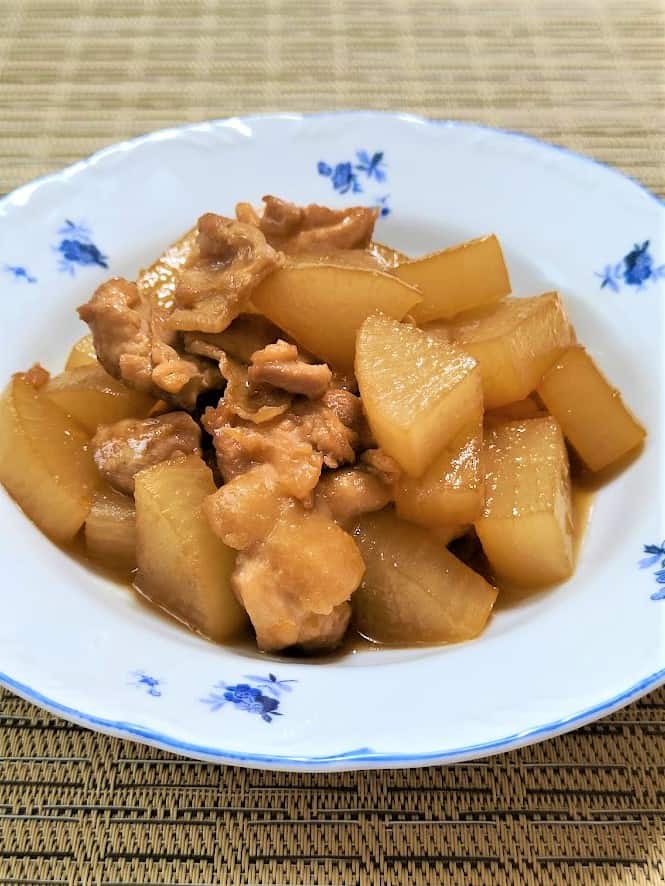
Jump to:
What is Tori Daikon?
Tori Daikon is a Japanese simmered dish that combines chicken and daikon radish, seasoned with Japanese teriyaki sauce made primarily of mirin and soy sauce. "Tori" means chicken, and "Daikon" refers to daikon radish. By simmering the chicken together with daikon, the chicken flavor infuses into the daikon, creating a delightful dish.
Since most of the cooking process involves simmering, it is easy to make. The daikon becomes tender and absorbs the flavors as it simmers slowly. I hope you enjoy this traditional Japanese taste.
The sauce used
The sauce used for this dish is Japanese teriyaki sauce made with sake, mirin, sugar, and soy sauce. In Japan, it is typically used for cooking meat or fish dishes, and the dish prepared with this glaze is called 'teriyaki' because the surface of the food looks shiny (teri) when cooked (yaki) with it.
Although teriyaki sauce is also available in the U.S., it differs in both ingredients and taste from the Japanese version. U.S. teriyaki sauce is a Western-style sauce originally produced by Kikkoman, a Japanese soy sauce company. For an authentic experience, try Japanese teriyaki sauce for your Japanese dishes.
Simple guide to otoshi-buta (drop lid)
In Japan, when making this dish—or really, simmered dishes in general—it is common to use an otoshi-buta (drop lid).
An otoshi-buta is a lid that sits directly on top of the ingredients in a pot or pan. Placing the lid directly on the ingredients allows the cooking liquid underneath to circulate more evenly, resulting in more efficient simmering with less liquid.

Commercial versions are available, but you can easily make one yourself by simply poking a large hole or several small ones in a sheet of aluminum foil—as shown in the photo above. The holes help prevent the otoshi-buta from floating up due to steam pressure. You can use a regular lid instead, but since it is so easy to make, I recommend giving it a try.
Various Japanese simmered dishes using daikon
Daikon radish is a type of vegetable that easily absorbs flavors, making it a staple in Japanese simmered dishes. After trying this dish, I encourage you to explore other simmered dishes using daikon, such as "Butabara Daikon" (simmered pork belly and daikon) or "Buri Daikon" (simmered yellowtail and daikon). Let's embark on a culinary adventure.
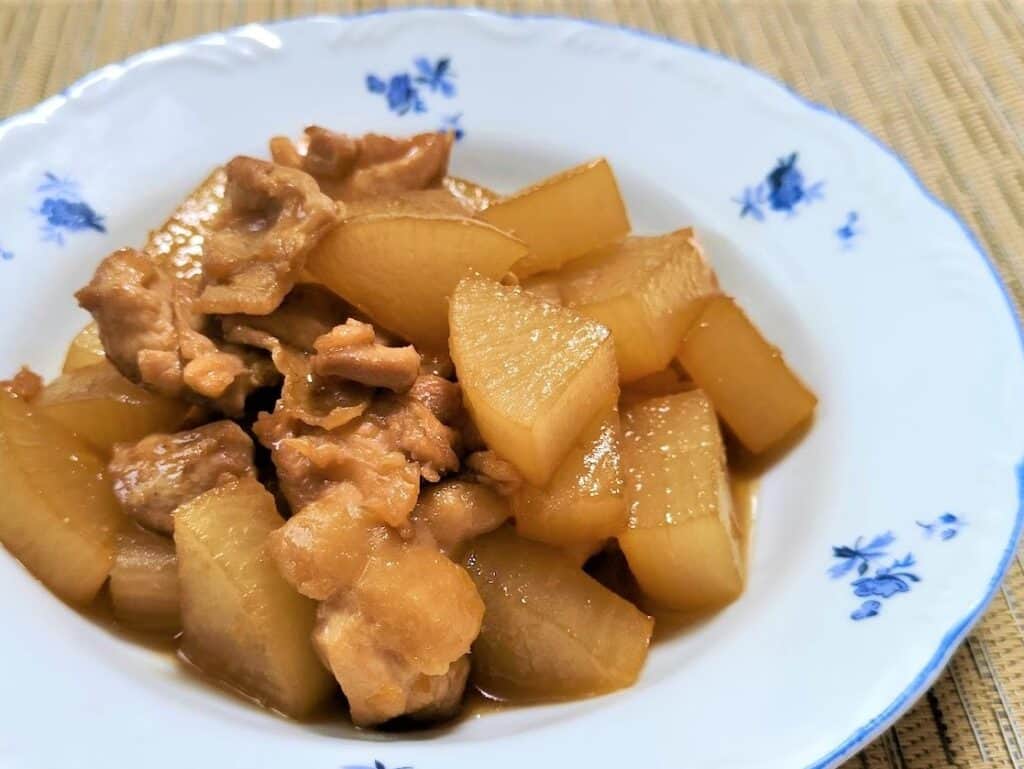
📋Step-by-step recipe
Equipment
- otoshi-buta (drop-lid) (You can easily make one by following the instructions above. If that seems like too much trouble, you can simply use a regular lid instead.)
Ingredients
- 10.6 oz daikon radish
- 0.45 lb boneless chicken thigh
- 0.17 oz ginger
Seasonings:
- ⅚ cup dashi stock (Please refer to the linked page for instructions on how to make it. For plant-based options, see the pages on Kombu Dashi and Shiitake Dashi.)
- 1 Tbsp sake
- 2 Tbsp mirin
- 1 tsp sugar
Finishing touch seasoning:
- 1 ½ Tbsp soy sauce
Instructions
🕒 Total: 35 mins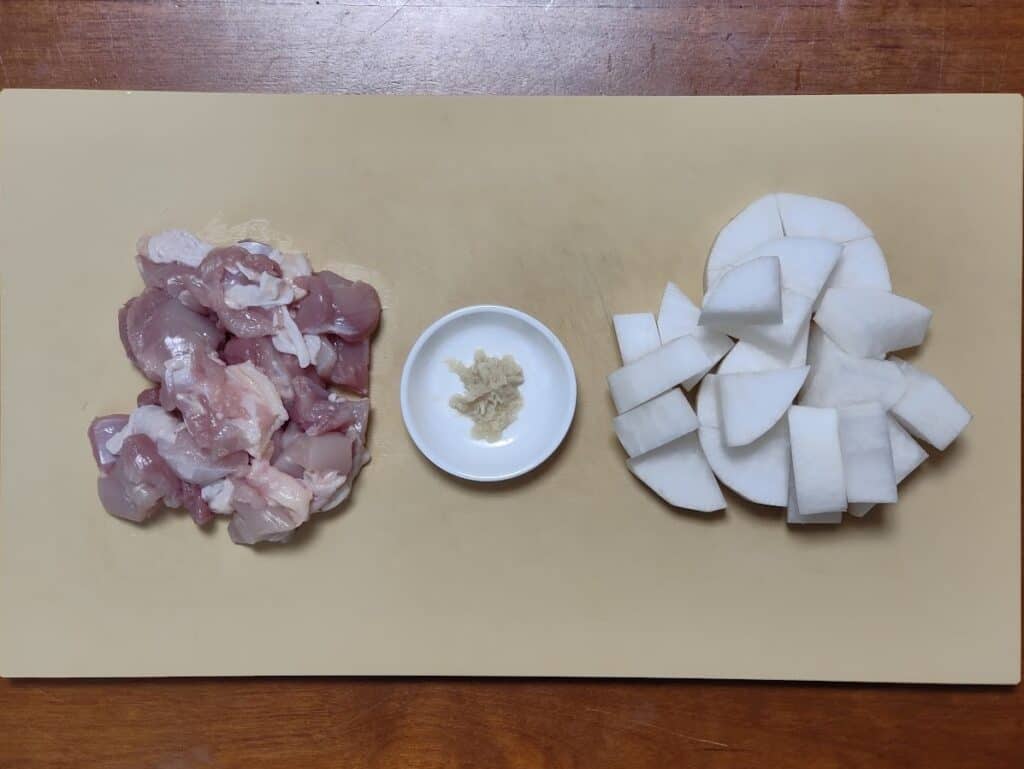
Step 1
Peel and cut daikon into ⅘-inch (2 cm) thick rounds, then further divide each round into bite-sized pieces, either into sixths or eighths. Cut chicken thigh into ⅘-inch (2 cm) cubes. Peel and grate ginger.
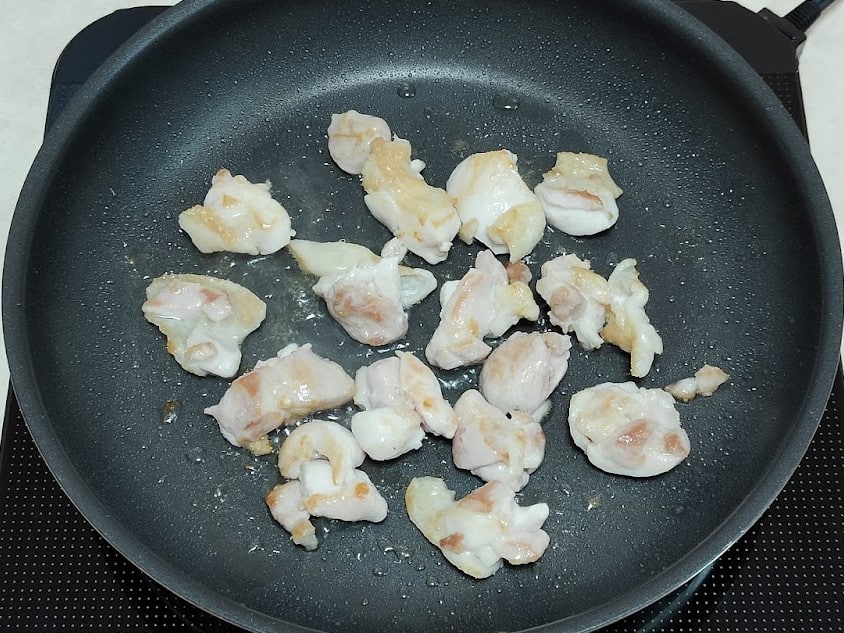
Step 2
Heat oil in a pan. Add the chicken thighs and sauté them over medium heat until they change color on both sides.
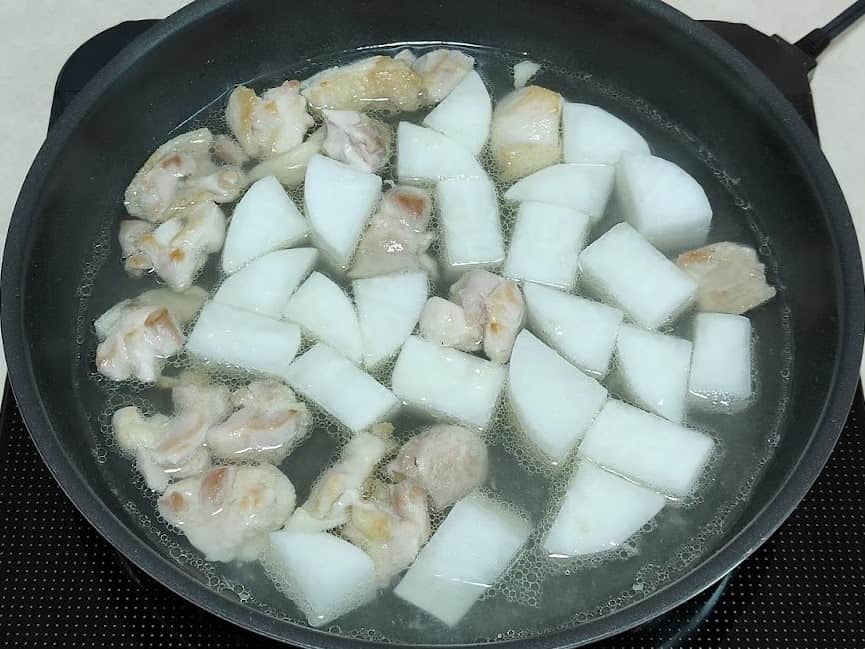
Step 3
Add the daikon, grated ginger, and seasonings (dashi, sake, mirin, and sugar) to the pan. Once the mixture comes to a boil, cover the pan with an otoshi-buta and let it simmer over low heat for about 15 minutes.
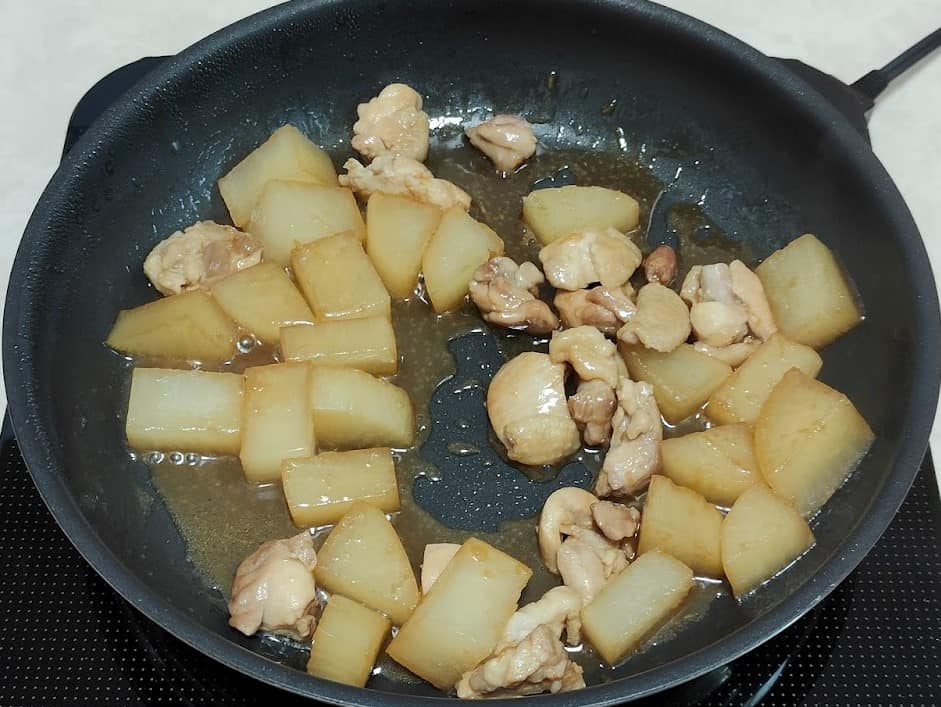
Step 4
Remove the otoshi-buta, add soy sauce to the pan, and continue simmering over medium heat until most of the liquid is reduced, about 10 minutes.
To store
You can store it in the refrigerator for up to 3 days.
If you try this recipe, I’d love to hear what you think. Please consider leaving a review and star rating in the comments below. If you enjoyed it, I’d really appreciate it if you shared it with your friends.
Recipe card

Tori Daikon (Japanese Simmered Chicken and Daikon)
Equipment
- otoshi-buta (drop-lid) (You can easily make one by following the instructions above. If that seems like too much trouble, you can simply use a regular lid instead.)
Ingredients
- 10.6 oz daikon radish
- 0.45 lb boneless chicken thigh
- 0.17 oz ginger
Seasonings:
- ⅚ cup dashi stock (Please refer to the linked page for instructions on how to make it. For plant-based options, see the pages on Kombu Dashi and Shiitake Dashi.)
- 1 Tbsp sake
- 2 Tbsp mirin
- 1 tsp sugar
Finishing touch seasoning:
- 1 ½ Tbsp soy sauce
Instructions
- Peel and cut daikon into ⅘-inch (2 cm) thick rounds, then further divide each round into bite-sized pieces, either into sixths or eighths. Cut chicken thigh into ⅘-inch (2 cm) cubes. Peel and grate ginger.
- Heat oil in a pan. Add the chicken thighs and sauté them over medium heat until they change color on both sides.
- Add the daikon, grated ginger, and seasonings (dashi, sake, mirin, and sugar) to the pan. Once the mixture comes to a boil, cover the pan with an otoshi-buta and let it simmer over low heat for about 15 minutes.
- Remove the otoshi-buta, add soy sauce to the pan, and continue simmering over medium heat until most of the liquid is reduced, about 10 minutes.
Notes
- You can store it in the refrigerator for up to 3 days.





Leave a Rating and a Comment